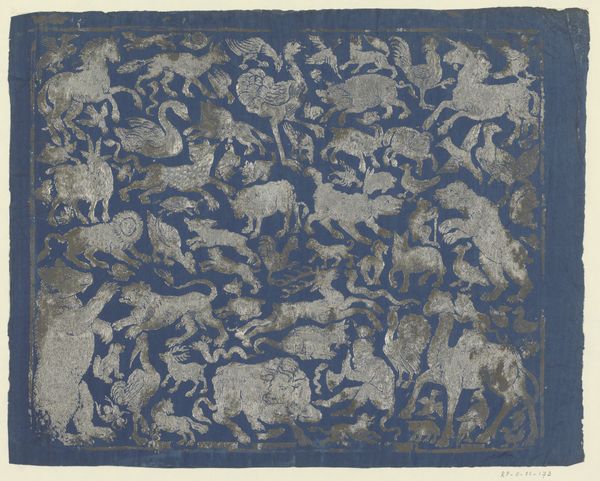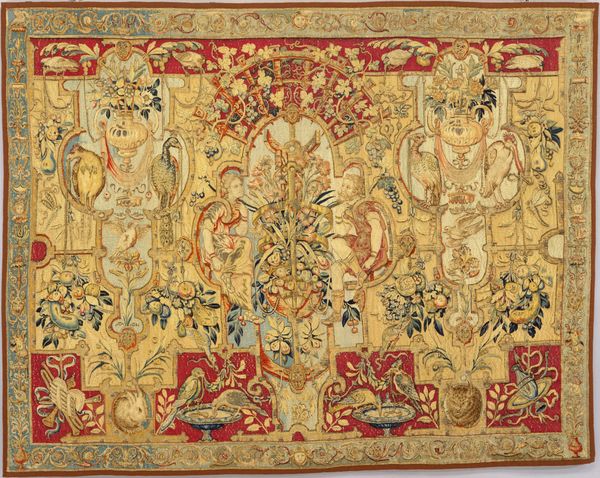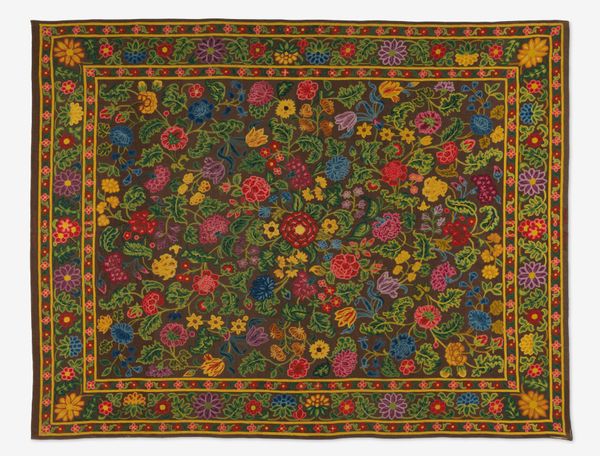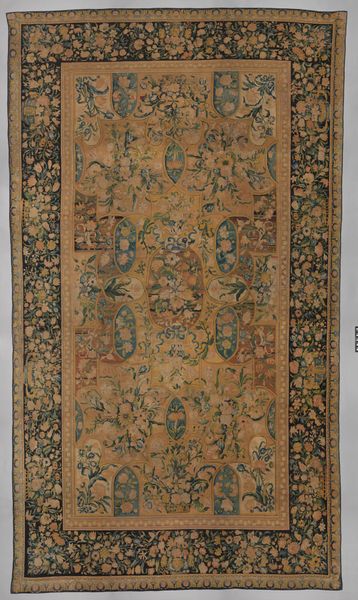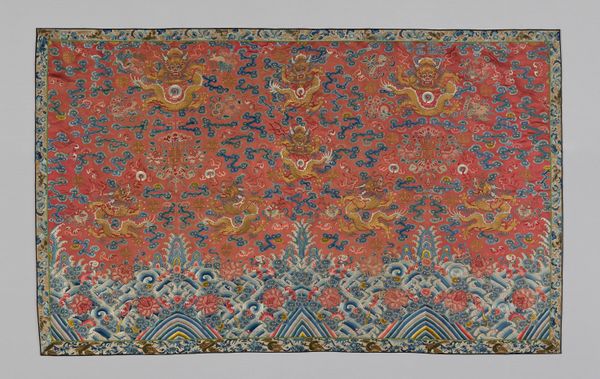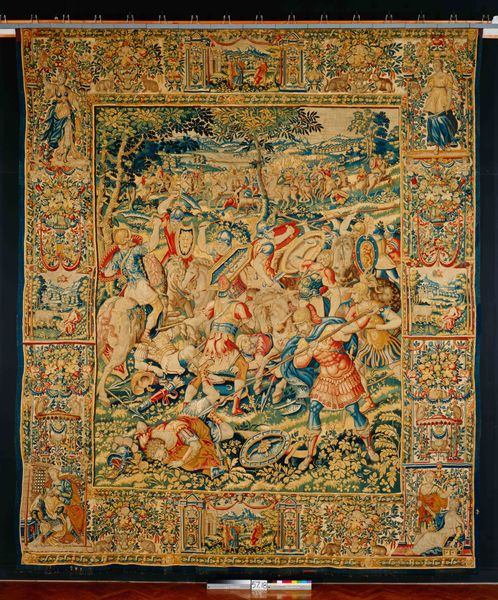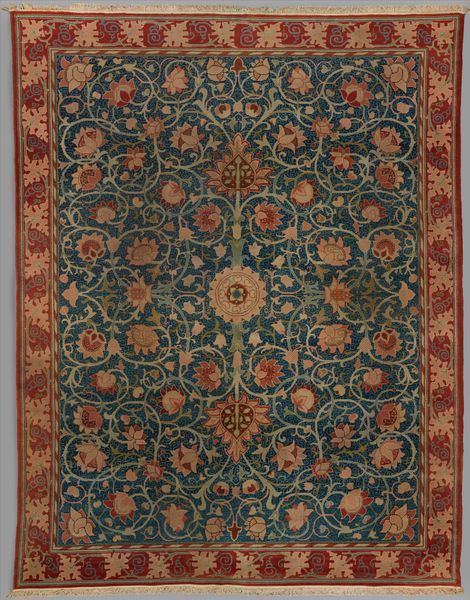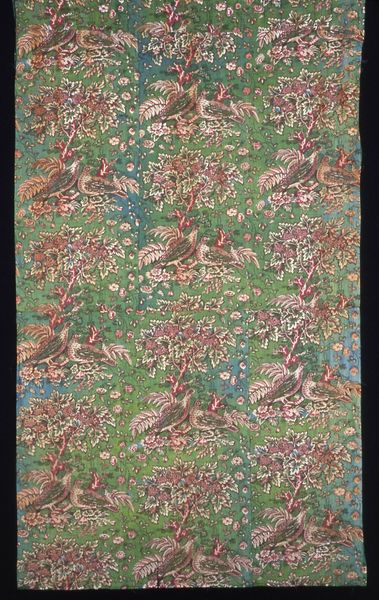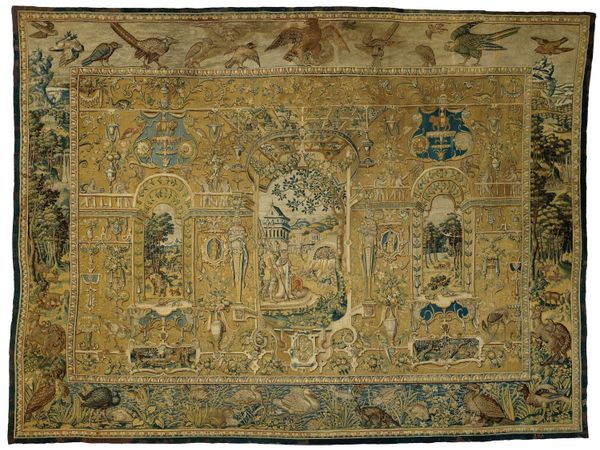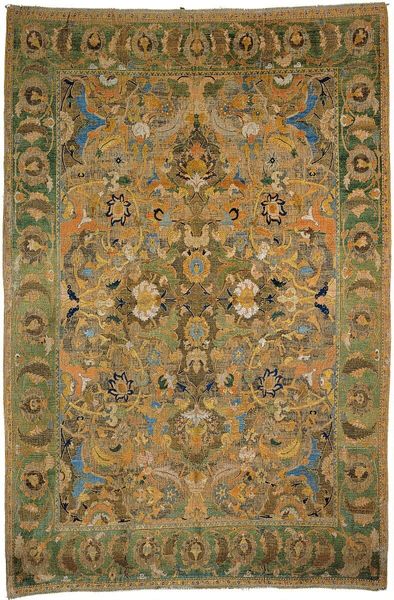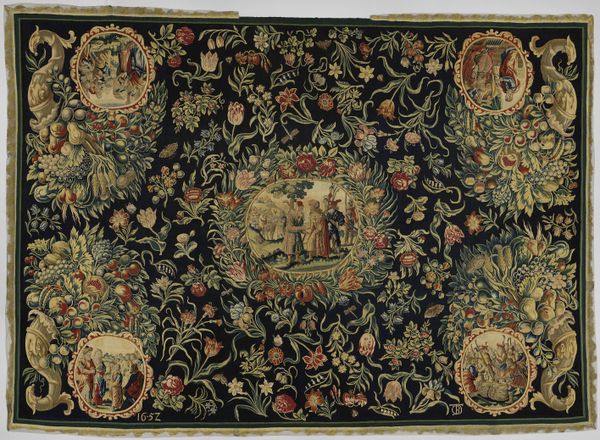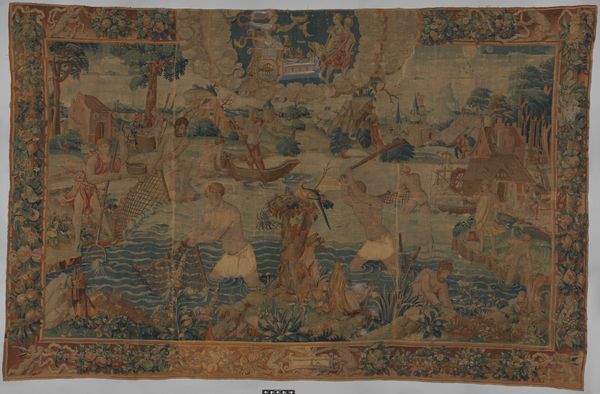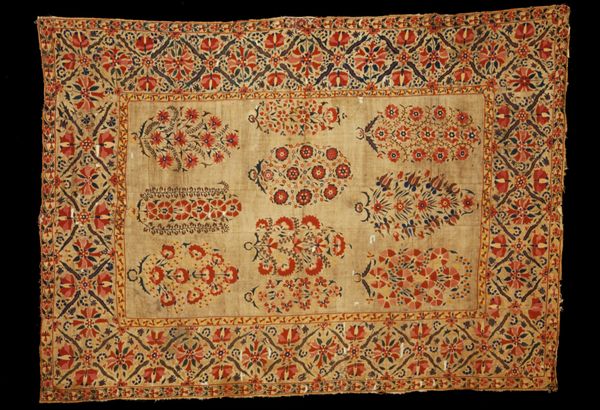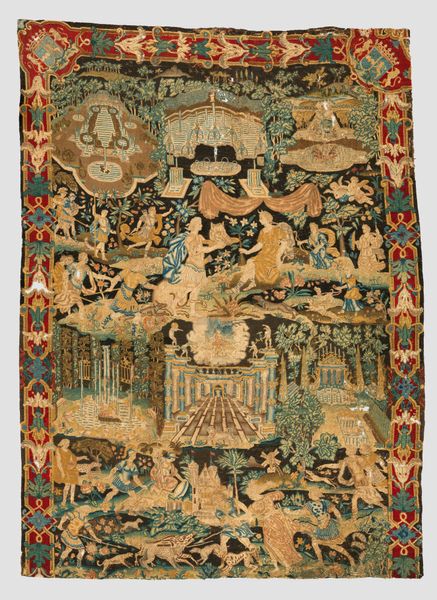
Allegorical -Millefleurs- Tapestry with Animals c. 1530 - 1545
0:00
0:00
fibre-art, silk, weaving, textile, wool
#
fibre-art
#
medieval
#
allegory
#
silk
#
weaving
#
landscape
#
textile
#
wool
#
fantasy-art
#
folk-art
Dimensions: 138 7/8 x 157 3/4 in. (352.74 x 400.69 cm) (irregular)
Copyright: Public Domain
This anonymous tapestry, a dance of wool and silk, presents us with an allegorical scene teeming with life. Across a 'millefleurs,' or thousand flowers background, deer, unicorns, and various birds populate a dense, verdant landscape. The unicorn, a symbol of purity and grace, is juxtaposed here with other animals in a tapestry likely intended for secular, courtly enjoyment. The 'millefleurs' style itself, reminiscent of the earthly paradise, finds echoes in earlier tapestries and illuminated manuscripts. Consider the unicorn's transformation—from ancient associations with wildness and untamable power to its later symbolic capture, often interpreted through a Christian lens as Christ's incarnation. This duality reveals the layered psyche of the Middle Ages. The tapestry invites us into a vibrant dream, where symbols of desire, faith, and the natural world intertwine, revealing a non-linear narrative of human emotion.
Comments
minneapolisinstituteofart almost 2 years ago
⋮
Millefleurs (thousand-flower) tapestries became popular in the late Middle Ages. Some contained flowers only; others, like this one, included animals and birds. Pictured here are common animals such as deer and rabbits as well as exotic creatures like the lion, leopard, and unicorn. They are symbolic as well as decorative. The unicorn, for example, represents either Christ or the Virgin Mary. The three clumps of rosebushes forming a triangle, allude to the Trinity (God as Father, Son, and Holy Spirit), while the barking hound (lower left) and wild falcon (top right) stand for the Devil or other evil forces. Tapestries were costly items, requiring much time and skill to produce. Often several weavers worked together on a single tapestry, each completing about one square yard a month. Some weavers specialized in features such as architectural elements or foliage. The master weaver, who supervised the project, wove the most difficult areas.
Join the conversation
Join millions of artists and users on Artera today and experience the ultimate creative platform.
